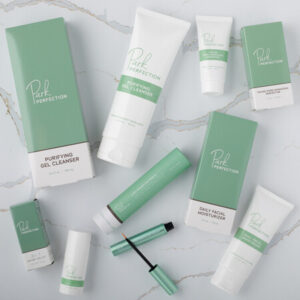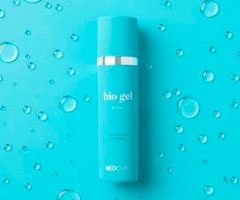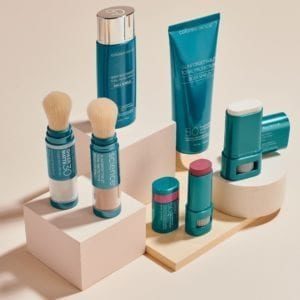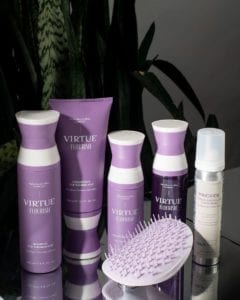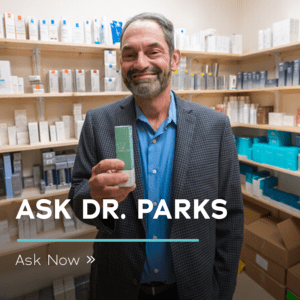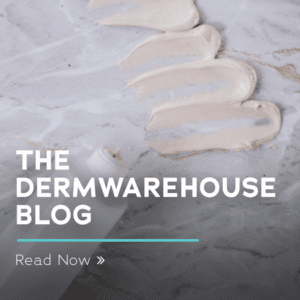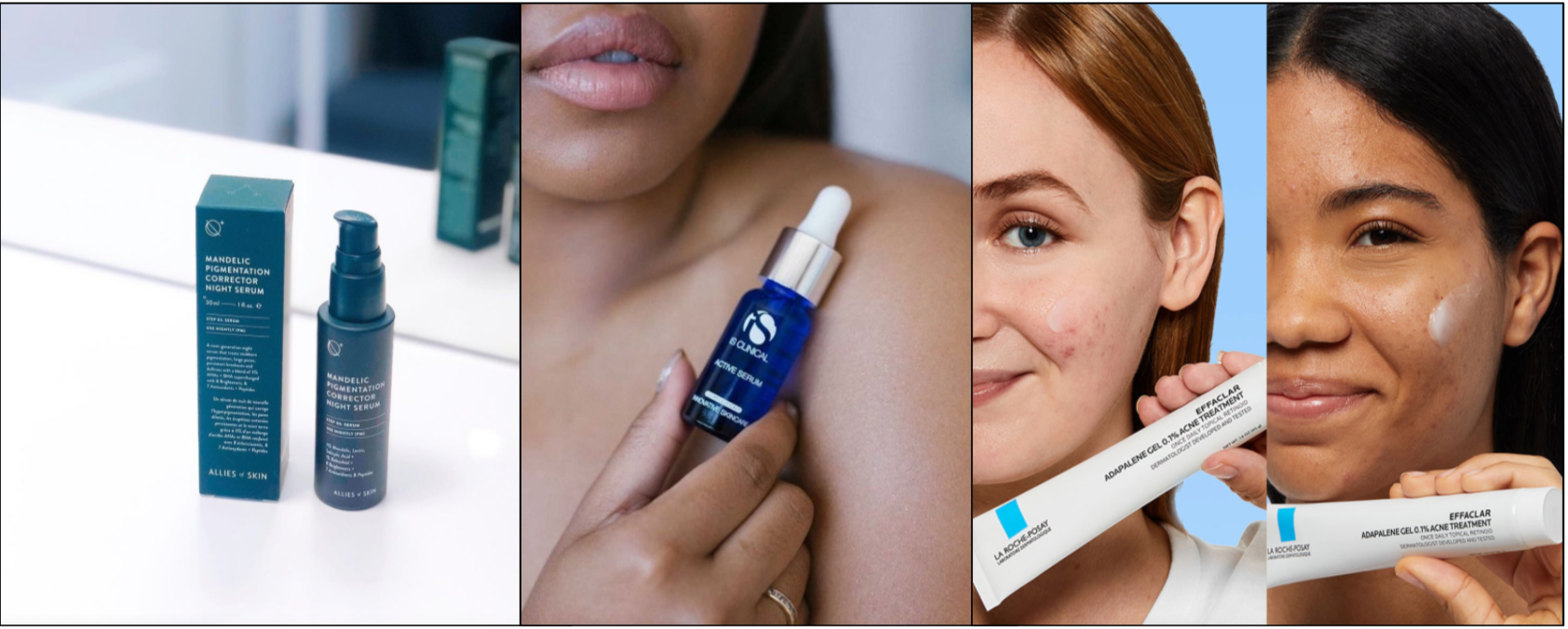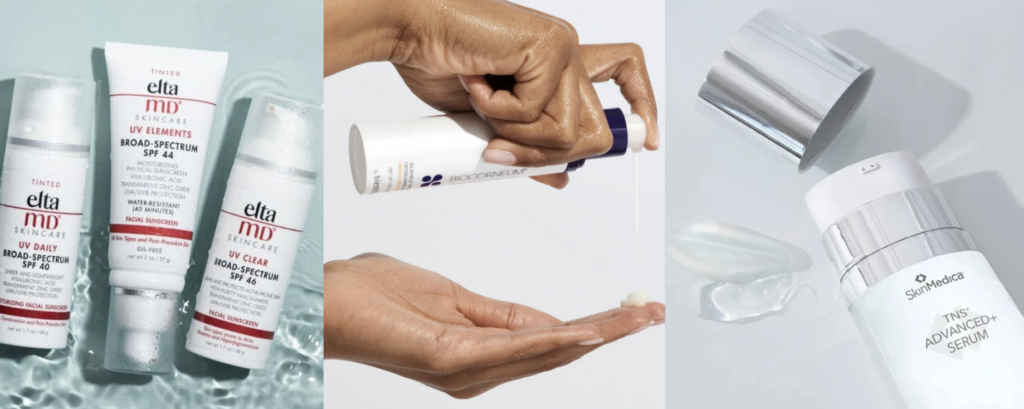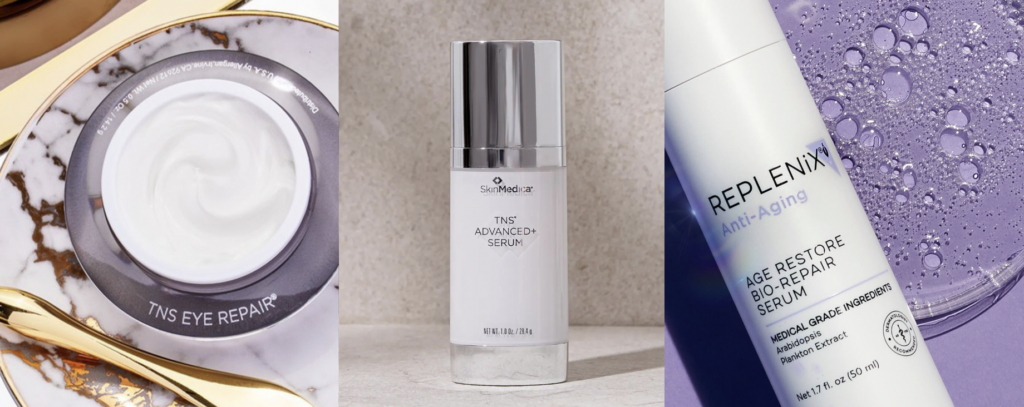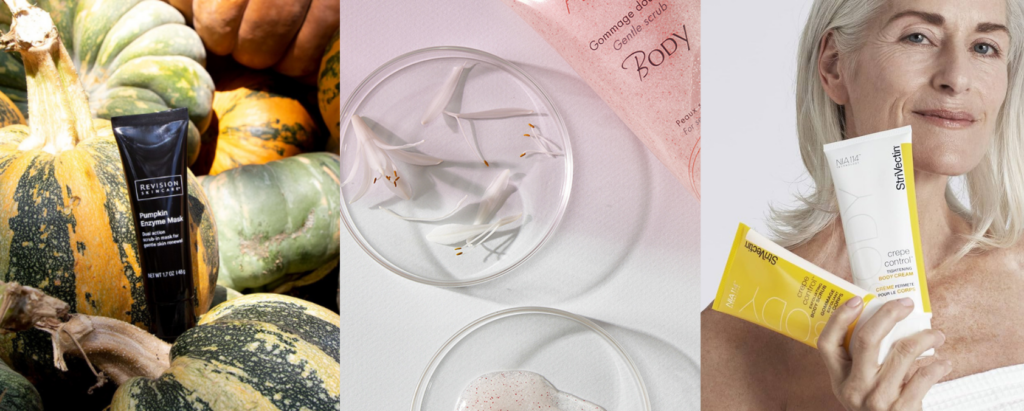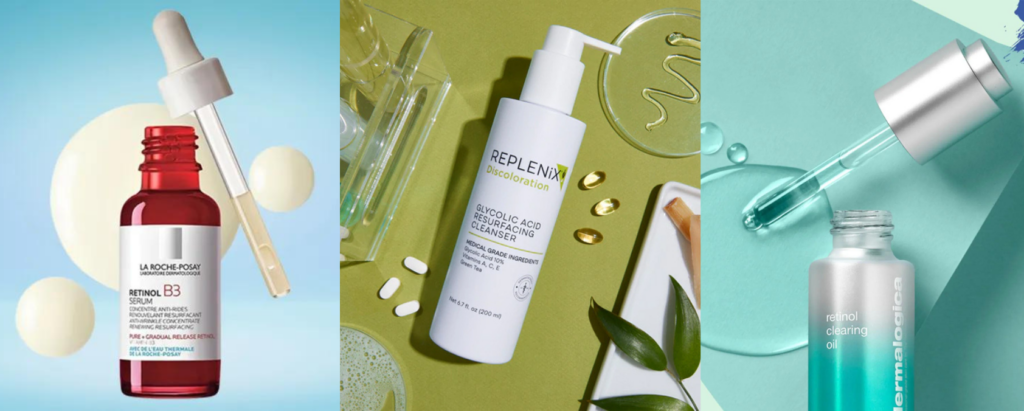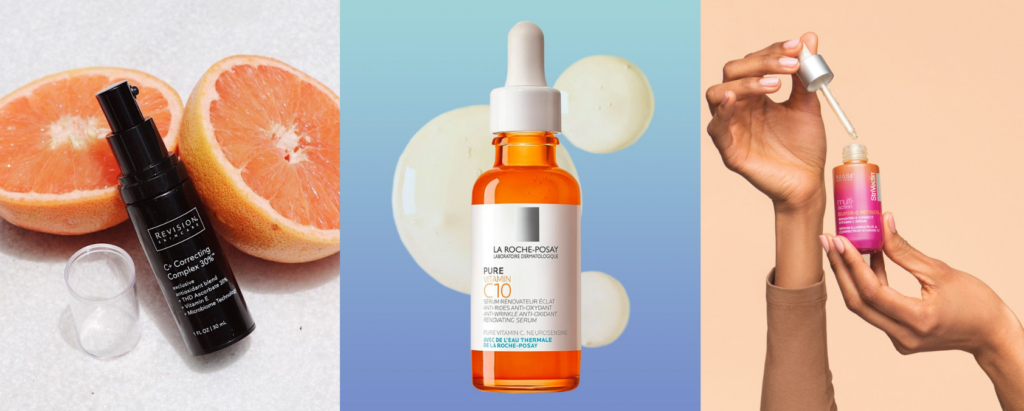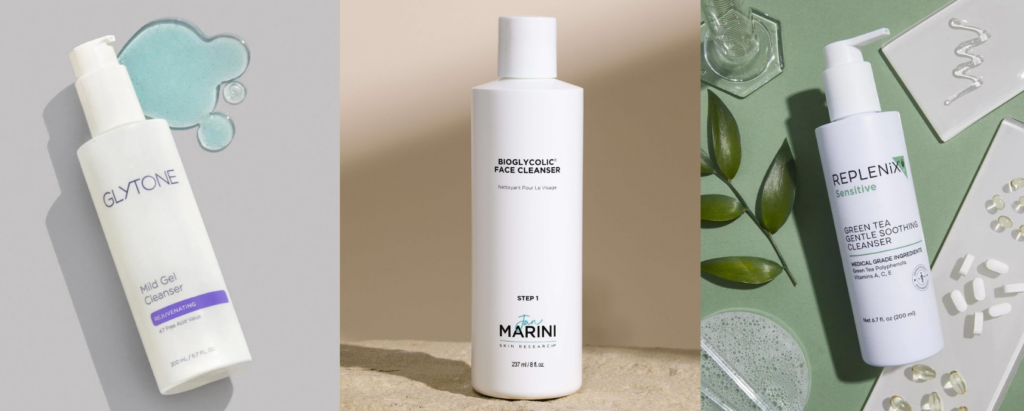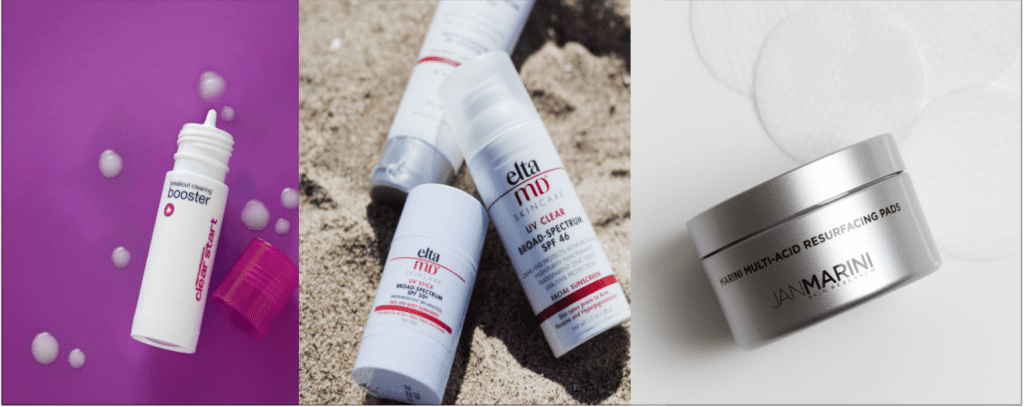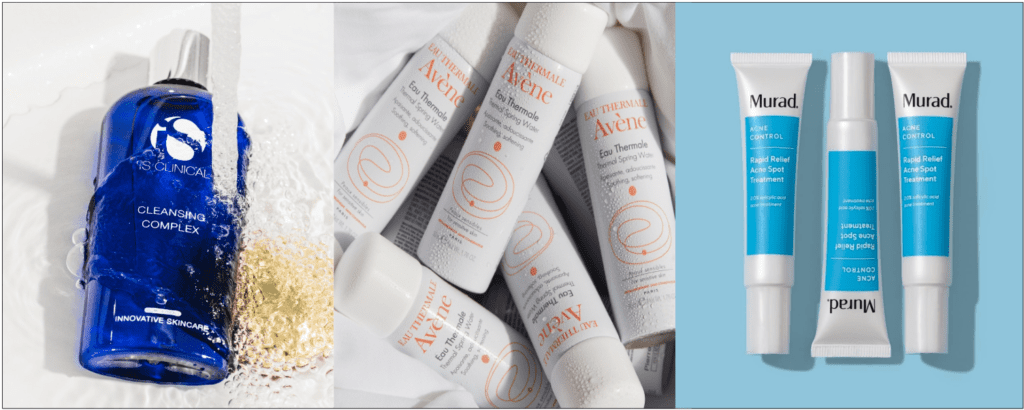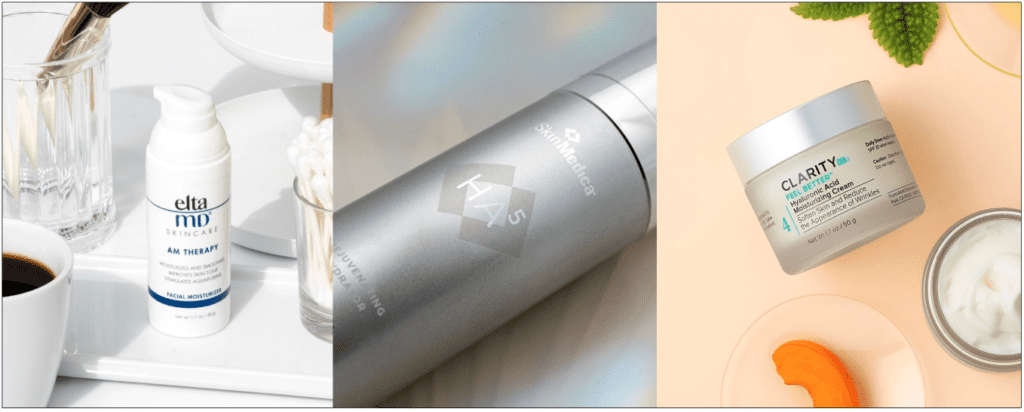Many of us know the familiar feeling: you work so hard to get your skin nice and clear. You use a consistent skincare routine every single day and you slowly start to see your whiteheads and pustules start to clear up. You’re so excited to finally be acne-free, and then you notice the blackheads. They might be on your nose, your chin, or your forehead, and they can really put a damper on your clear skin routine. Never fear- DermWarehouse is here to give you the run-down on blackheads, from how they form to how to get rid of them!
What are blackheads?
You will typically be able to identify a blackhead but it’s just that- an open pore that has turned black. Blackheads are actually small bumps that appear on your skin due to hair follicles becoming clogged within your pores. Hair follicles contain one hair and one sebaceous gland that produces oil in the skin. When this follicle becomes clogged with dead skin, dirt, makeup, or excess oil, it causes a comedone, or a pimple. If the skin around the pimple stays covering it, it becomes a whitehead. If not, it is exposed to oxygen, causing it to turn the black color seen in blackheads. Blackheads typically don’t appear red, painful, or inflamed on the skin like a whitehead can be, but they can be more difficult to treat.
What’s the difference between blackheads and sebaceous filaments?
They look similar and are caused by similar factors, but sebaceous filaments technically aren’t acne. They often appear on the nose or chin areas, but instead of black, they’re more of a gray or skin-tone color. These are simply just clogged pores, and aren’t made worse by acne-causing bacteria. Excess oil and dead skin can get caught in your pores and lead to these clogged pores, or sebaceous filaments. While you can’t open and close your pores or drastically change your pore size (contrary to popular belief), you can get rid of the gunk that’s stored in your pores, whether it’s acne or just a clogged pore.
How can I treat blackheads?
With both blackheads and sebaceous filaments, you’ll need to use an exfoliator to help unclog your pores and soften the plug within them that’s causing the clog. A physical exfoliator can be great for getting rid of dead skin, while a chemical exfoliator will really get into your pores to dissolve any gunk that’s causing it to be clogged and prevent future clogs. You can try any of the following ingredients to help exfoliate out all the dead skin and oil from your pores:
Salicylic Acid:
Salicylic acid is a beta-hydroxy acid, one of the most commonly used ingredients in skincare. It gets deep into the pores to dissolve pore-clogging gunk like dead skin. It’s great for blackheads, as it can help loosen up your clogged pores and prevent them from forming. The Allies of Skin Mandelic Pigmentation Corrector Night Serum contains mandelic acid, salicylic acid, niacinamide, hyaluronic acid and more to penetrate your pores and dissolve blackheads without irritating or stripping the skin. The iS Clinical Active Serum is also a great product with salicylic acid. It’s formulated with a powerhouse combination of glycolic acid, salicylic acid, lactic acid, and kojic acid to banish breakouts and blackheads.
Retinol:
Retinol is similar to AHAs and BHAs as it is also a chemical exfoliant. This popular ingredient helps skin cells turn over faster, leading to less dead skin clogging pores and causing blackheads. La Roche Posay Effaclar Adapalene Gel is a gentle yet effective retinoid treatment formulated specifically for fighting acne. It unclogs pores, absorbs excess oil, and evens out skin tone. The SkinMedica Retinol Complex 0.5 is also a great option, formulated with 0.5% retinol, peptides, and niacinamide to smooth and clear skin.
Glycolic Acid:
Glycolic acid is also a chemical exfoliant, but it is an alpha-hydroxy acid instead of a beta-hydroxy acid. It gets into the skin and dissolves sebum that can lead to clogged pores and ultimately, blackheads. Introduce glycolic acid into your routine with a serum or cleanser like the Glytone Mild Gel Cleanser. It’s oil-free and glycolic acid breaks down dead skin to clear pores and fight blackheads.
A few tips for clearing blackheads:
- Don’t try to squeeze and pick at them yourself. Blackheads can be extremely difficult to remove, and you’re risking damaging your skin or introducing new bacteria to the area.
- Try steaming your face (or just let your face soak up the steam in the shower!) This helps soften the skin and may help with blackhead removal.
- Make sure you’re moisturizing! Just because you have breakouts or oily skin doesn’t mean your skin doesn’t need hydration. Chemical exfoliants can also cause skin to be drier and more sensitive, so if you’re using any of the ingredients listed above, make sure you’re giving your skin the moisture it needs.
And remember- blackheads are normal and extremely common. Talk to your dermatologist if you’re still struggling with blackheads to find the right routine for you!

